Cartier explores influence of Islamic art in groundbreaking Paris exhibition
DS+R (Diller Scofidio + Renfro) has designed the striking geometrical scenography for ‘Cartier and Islamic Art: In Search of Modernity’ at the Musée des Arts Décoratifs, Paris

A new Cartier exhibition at the Musée des Arts Décoratifs, Paris, explores the enduring influence Islamic art has had on the maison’s jewellery and precious objects. American architectural firm DS+R (Diller Scofidio + Renfro) – including former Wallpaper* guest editor and Design Awards Judge Liz Diller – has designed the scenography for ‘Cartier and Islamic Art: In Search of Modernity’, which takes an all-encompassing journey into the influence of the culture on the maison, framed against the cultural context of Paris in the early 20th century.
Discovering the history of Cartier’s relationship with Islamic Art
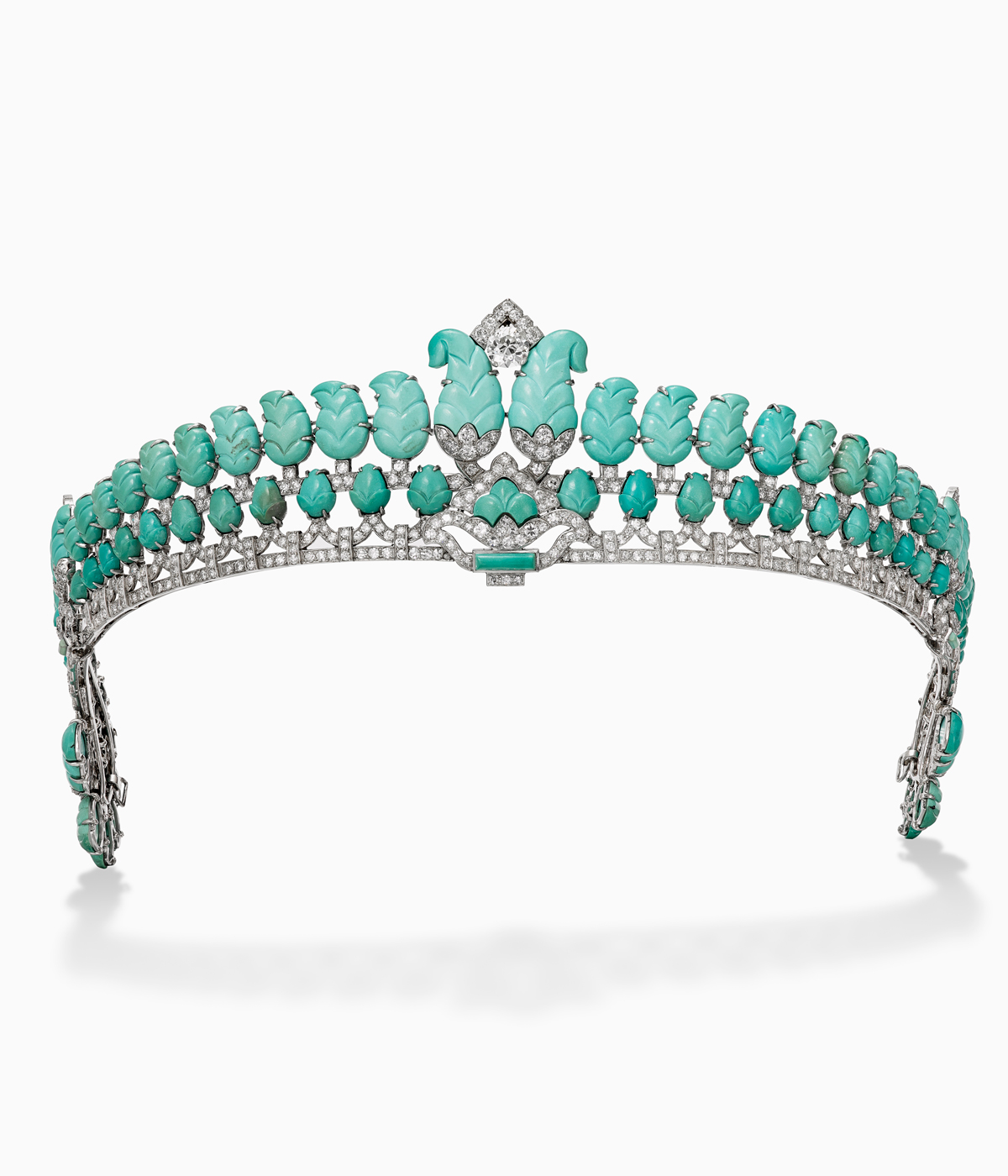
Tiara, Cartier London, 1936, platinum, diamonds, turquoise, Vincent Wulveryck Cartier Collection © Cartier
The Cartier exhibition, by focusing on the early 20th century, puts Louis and Jacques Cartier, two of the founder’s grandsons, at the centre of the story. For director of image, style and heritage at Cartier International, Pierre Rainero, the cultural events of the era make it a crucial part of Cartier’s history. ‘At the turn of the 20th century, Paris became an important commercial centre for Islamic artworks. The Constitutional Revolution in Iran (1905 – 1911) and later the fragmentation of the Ottoman Empire, led to the arrival of masterpieces of Islamic art in Paris,’ he says, emphasising that the historical context is essentially intertwined in Cartier’s story.
‘At the same time, the study of Islamic art was emerging as an academic discipline in Europe, and exhibitions dedicated to Islamic art were organised in that respect: in 1903 at the Musée des Arts Décoratifs, and in 1910 in Munich, the latter being the culmination, with its pure scenography and artworks organised by geographical regions.’
These cultural events had a lasting impact on the brothers, and the designers and studios to which they turned for inspiration are explored in the first part of the exhibition, while the forms inspired by Islamic art are the focus of the second part. Louis Cartier’s personal interest in the genre has been reconstructed with assistance from the house of Cartier’s archives, with several of his artworks and books reunited here for the first time. For Jacques Cartier meanwhile, his love of travel is explored in the treasures he came across in places including India, which he first visited in 1911; such trips enabled him to build relationships with maharajahs and collect antique and contemporary jewellery.
‘Louis Cartier amassed an eclectic private collection, as we know from the sales held after his death,’ says Rainero. ‘He was a curious and scholarly man of taste with wide-ranging interests recalling those of the Renaissance collector or honnête homme of the 18th century. The items in Louis Cartier’s collection appear to have served three different purposes: to satisfy his personal pleasure; to inspire his designers (as with the library he assembled for their use); and, when added to the Maison Cartier’s stock of apprêts [fragments from disassembled jewellery and other objects], to serve as primary components for new designs. What we can note above all, is that Louis Cartier made the pieces of his collection available to the designers, as the photographs found in [one of the maison’s designers] Charles Jacqueau’s archives attest. For instance, photographs of two pen boxes, from Louis Cartier’s personal collection, were found in Jacqueau’s archives, probably as a source of inspiration.’
Jacques Cartier’s travels
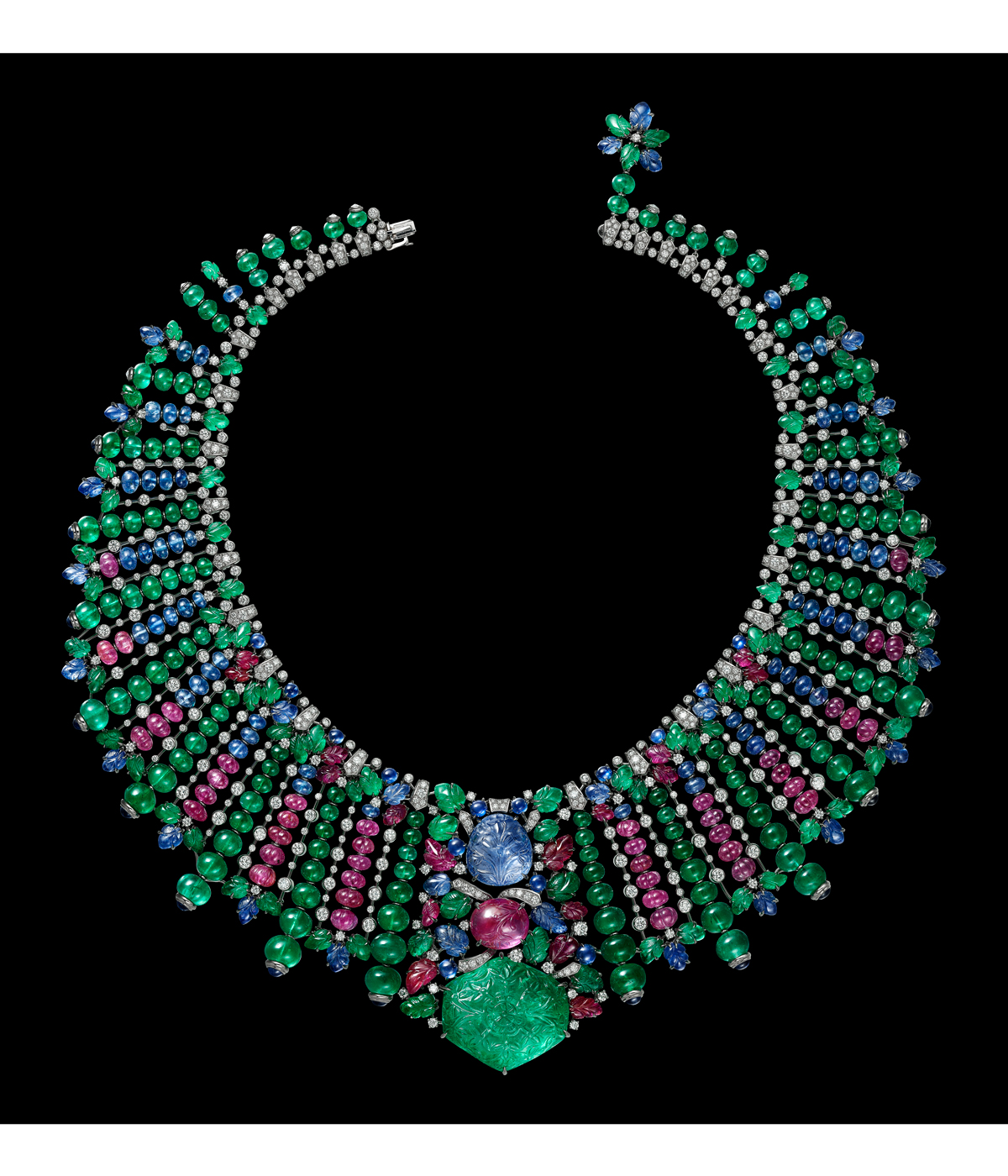
Necklace from the archives
Cartier’s design team were inspired by the treasures Jacques Cartier brought back from his travels in India and Bahrain in 1911 and 1912, with a wealth of materials including stones, Indian jewels and precious objects added to Cartier’s stock. The pieces were then subjected to Louis Cartier’s style-conscious eye in Paris. ‘These artefacts, purchased by the maison either on site or from merchants based in Paris mostly, could be included into new creations, becoming their major component in the design, or be used as an inspiration,’ says Rainero. ‘Jacques Cartier collected Mughal and contemporary jewels and precious objects, carved stones, and also photographs that he took himself or albums he bought, recording, for instance the Delhi Durbar.’
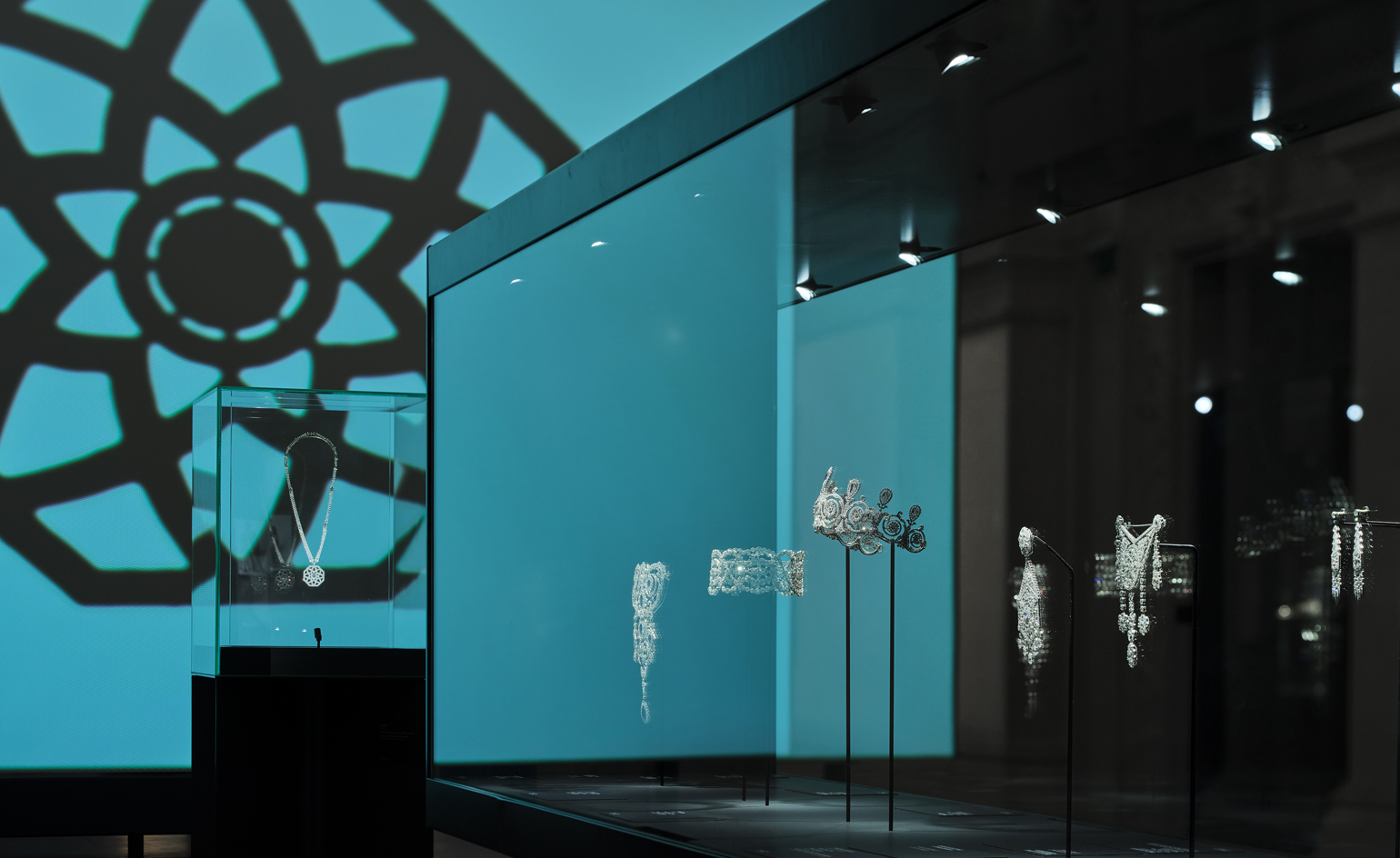
Musée des Arts Décoratifs, Cartier © MAD Paris
‘The account books from Jacques Cartier’s trips to India record his first acquisitions from local dealers of jewellery. It was certainly no coincidence that in the three months preceding his return to Europe, an “Oriental” stock was created in Paris.’ Rainero cites a bowl in smoky topaz as being included in the list of purchases made by Jacques Cartier in Agra on 22 February 1912, and the exhibition he organised upon his return from India, ‘Oriental Jewels and Objets d’Art Recently Collected in India’, at the London Cartier boutique, as examples of the great influence his travels held. ‘This exhibition toured the following year in Paris, then Boston and New York. Thanks to an in-depth study of archival photographs, the curators nearly pieced together the selection presented at the boutique on Rue de La Paix in 1913. The bowl in smoky topaz was part of it.’
Receive our daily digest of inspiration, escapism and design stories from around the world direct to your inbox.
The challenges for the curators
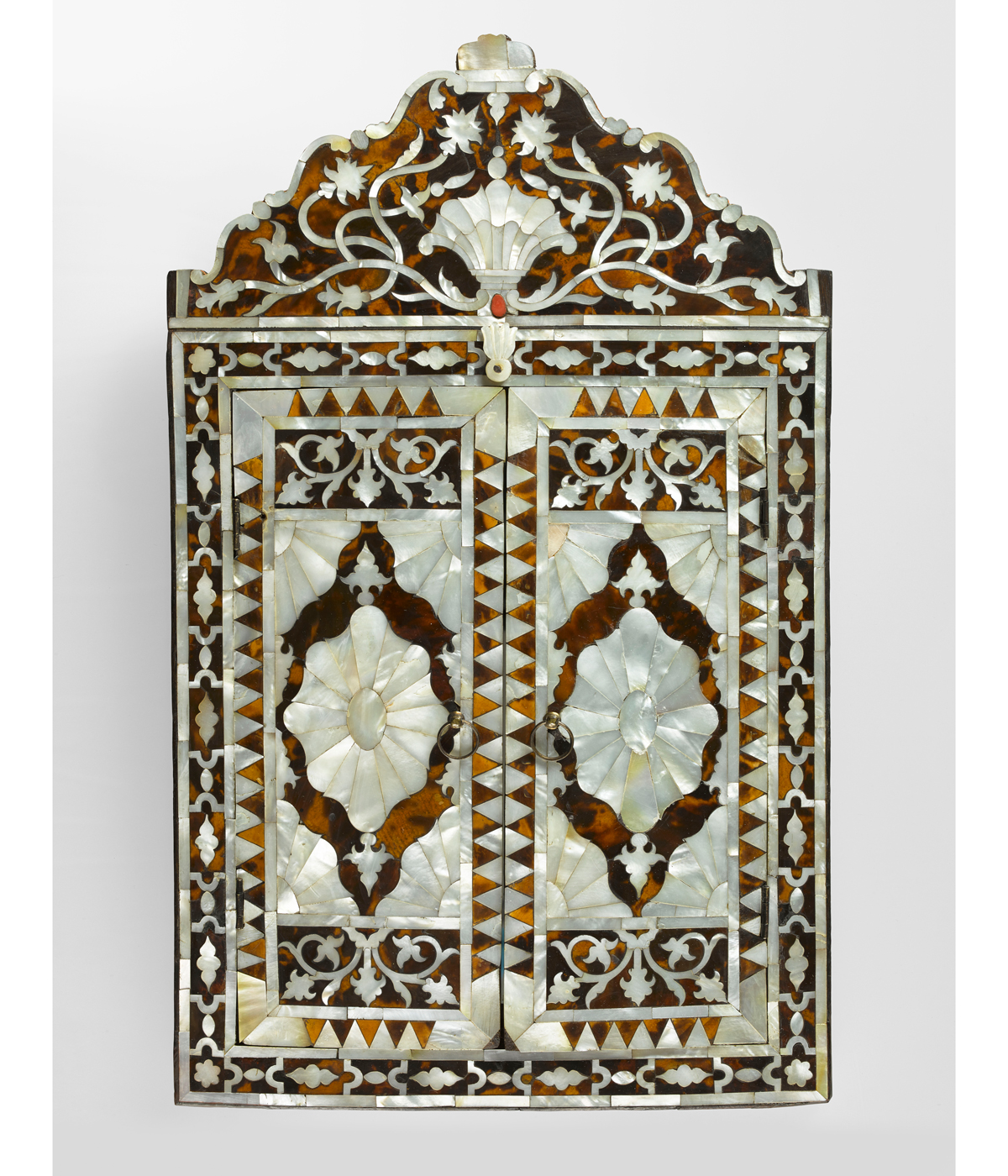
Piece from the Cartier archives
‘Apart from the inherent difficulty to all exhibitions in getting the approval of the lenders, this work was for the curators like an archeological excavation,’ Rainero tells us of Cartier’s new Paris exhibition. ‘It was an exciting investigation full of surprises and discoveries. They led a tremendous in-depth work into the Cartier archives, those of the Petit Palais-Musée des Beaux Arts de la Ville de Paris and private archives, which was a first. The challenge was, in particular, to identify the sources of inspiration of Cartier creations, locate Islamic artworks from Louis Cartier’s personal collection, as well as to identify the Islamic pieces and documents that Louis Cartier and his designers may have seen.’
The curators worked to illustrate the links between the origins of Islamic art and the pieces that inspired it in the exhibition by tracing the sources of Cartier’s inspirations to the wealth of material Louis Cartier would have come across. As well as his personal library and Islamic artworks from his private collection, curators also explored Islamic artworks that were on display in Paris museums such as the Musée de Cluny and Musée des Arts Décoratifs, in a bid to present as complete a picture as possible.
‘This identification was made possible thanks to the analysis of the designs kept in Cartier archives,’ Rainero explains. ‘This large collection of designs, studies and sketches is key to understanding the link between the Cartier creations and their source of inspiration.
‘The curators also identified a lexicon of Islamic shapes that inspired Cartier. In the second section of the exhibition, this lexicon is illustrated with a dialogue between Cartier creations and Islamic artworks from the Louvre and the Musée des Arts Décoratifs collections (some of them were part of the first exhibitions dedicated to Islamic art).
‘The curators show that architecture, book bindings, and textiles were among the primary sources of inspiration that gave birth to characteristic motifs at Cartier – stepped merlons, finials, scrolls, cypress, boteh – according to which the pieces are organised in this second section of the exhibition.’
The Cartier exhibition at Musée des Arts Décoratifs
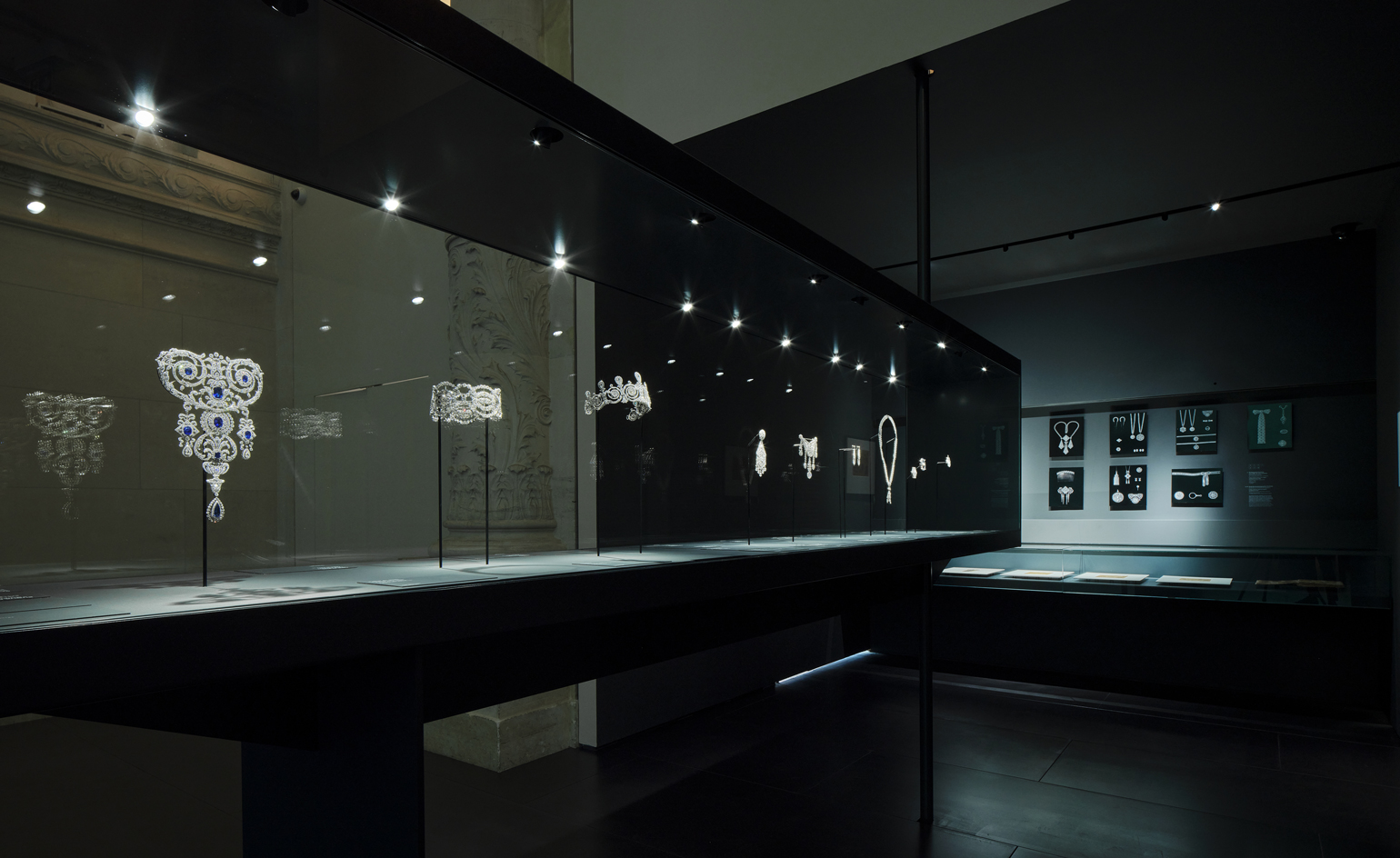
Musée des Arts Décoratifs, Cartier © MAD Paris
The exhibition itself nods to the Musée des Arts Décoratifs’ original philosophy of showing the work of different artists in applied arts, to inspire and to educate. The exhibition held there in 1903 about Islamic art was the starting point for this new one, which comes full circle in acknowledging the role the museum had in influencing Cartier at the beginning of the 20th century.
These historical references are intertwined with interactive digital technologies for an innovative multimedia experience. ‘Elizabeth Diller from DS+R was chosen to design the exhibition because of her very clever approach,’ says Rainero. ‘Her vision in terms of scenography was to focus on the works themselves. She understood that the link between Islamic art and Cartier went far beyond the context of curiosity for the Orient that was reigning in the Western world at that time. She analysed that link with a lot of depth and seriousness, and the result in terms of scenography is outstanding and very much linked to the spirit, and the main idea behind this exhibition.’
Digital animations on large screens in the nave add another dimension to the exhibition, showing visitors in 3D both the inspiration behind the pieces and the technical approach of the jewels. ‘These animations show the specific skills required to make a jewel, which is articulated and adapted to the movements of the wearer,’ adds Rainero. ‘Besides the inspiration which can be understood in 2D, the 3D animations remind us of the initial vocation of a jewel, which is to be worn.’
Ultimately, the exhibition celebrates the connection between Islamic art and Cartier, which is just as strong today, with a close study of the familiar geometric silhouettes. They are seen in both the iconic jewellery designs and in the arresting design of the exhibition itself.
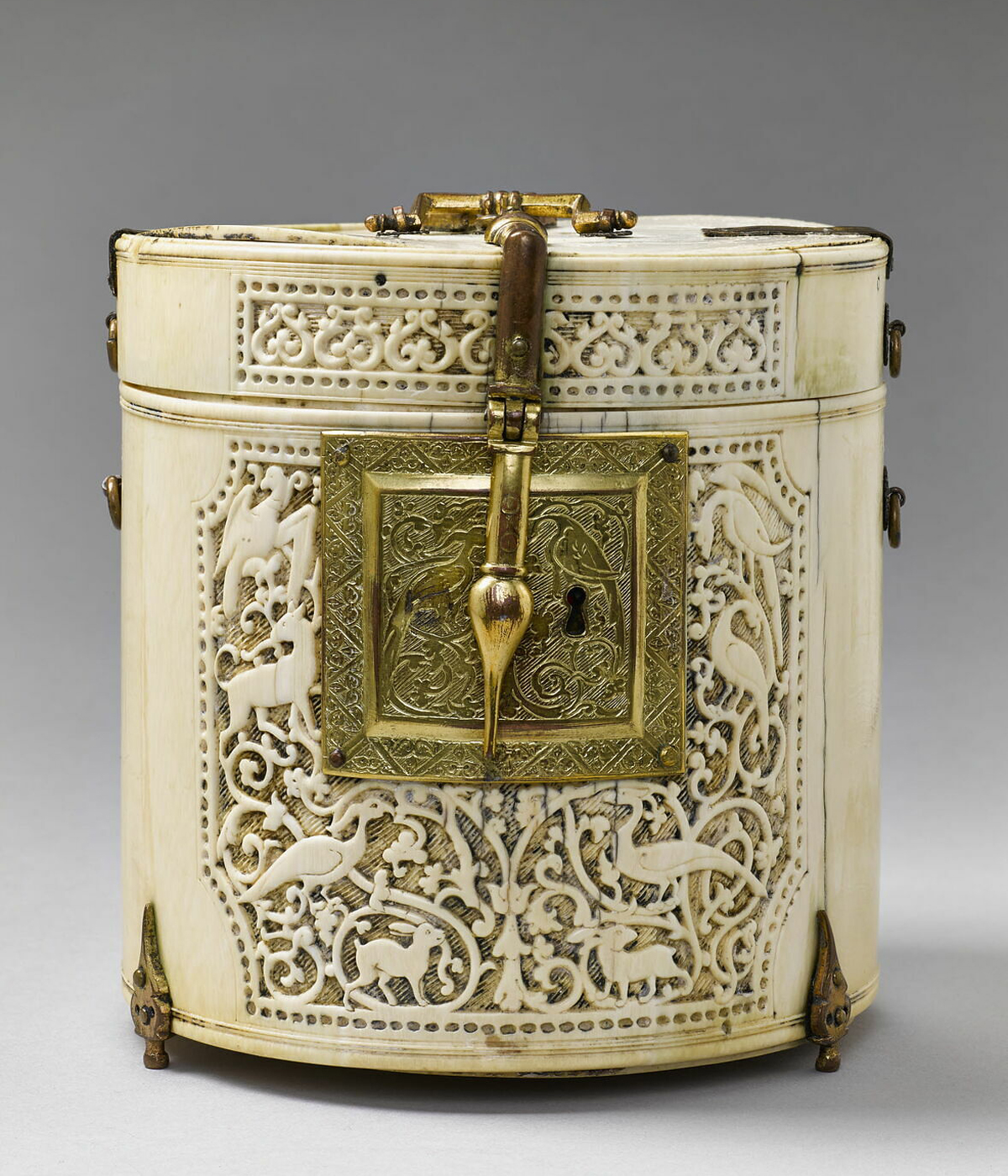
Pyxis - Sicily, 15th century Ivory (elephant), copper alloy, Exhibited at the Islamic Arts exhibition, Paris Musée des Arts Décoratifs, 1903, Musée du Louvre, Paris département des Arts de l’Islam © 2015, Musée du Louvre / Chipault - Soligny
Rainero acknowledges the importance of this graphic identity: ‘In Louis Cartier’s time, a study of geometry, abstraction and its infinite interplay between patterns and light was carried out. This very marked change of creative direction began as early as 1904, immediately after the “Exposition des arts musulmans” held at the Musée des Arts Décoratifs in Paris, and 20 years before the famous “Exposition Internationale des Arts Décoratifs et Industriels Modernes”, held in Paris in 1925. This is how Cartier gained its reputation as a true pioneer of new shapes. So very early on, by the beginning of the 20th century, we witnessed a silent inclusion of a new vocabulary of shapes and colours, in a corpus that was already well established at Cartier.’
Rainero points out it is a vocabulary that continues to grow today, with the rich geometric shapes brought to life in individual and contemporary jewellery pieces. Empty space is given an importance akin to that of the strong shapes and clean lines, with shadow lines playing with and creating patterns. ‘The effect is similar to that of the mashrabiya, which sculpts light in the same way as Cartier does with diamond-pavéd motifs,’ he says. ‘Over time, these elements – the geometry, the infinite interplay between patterns, the openwork settings playing with light, the colour combinations – are detached from their original context, yet persist as a recognition of their enduring relevance.
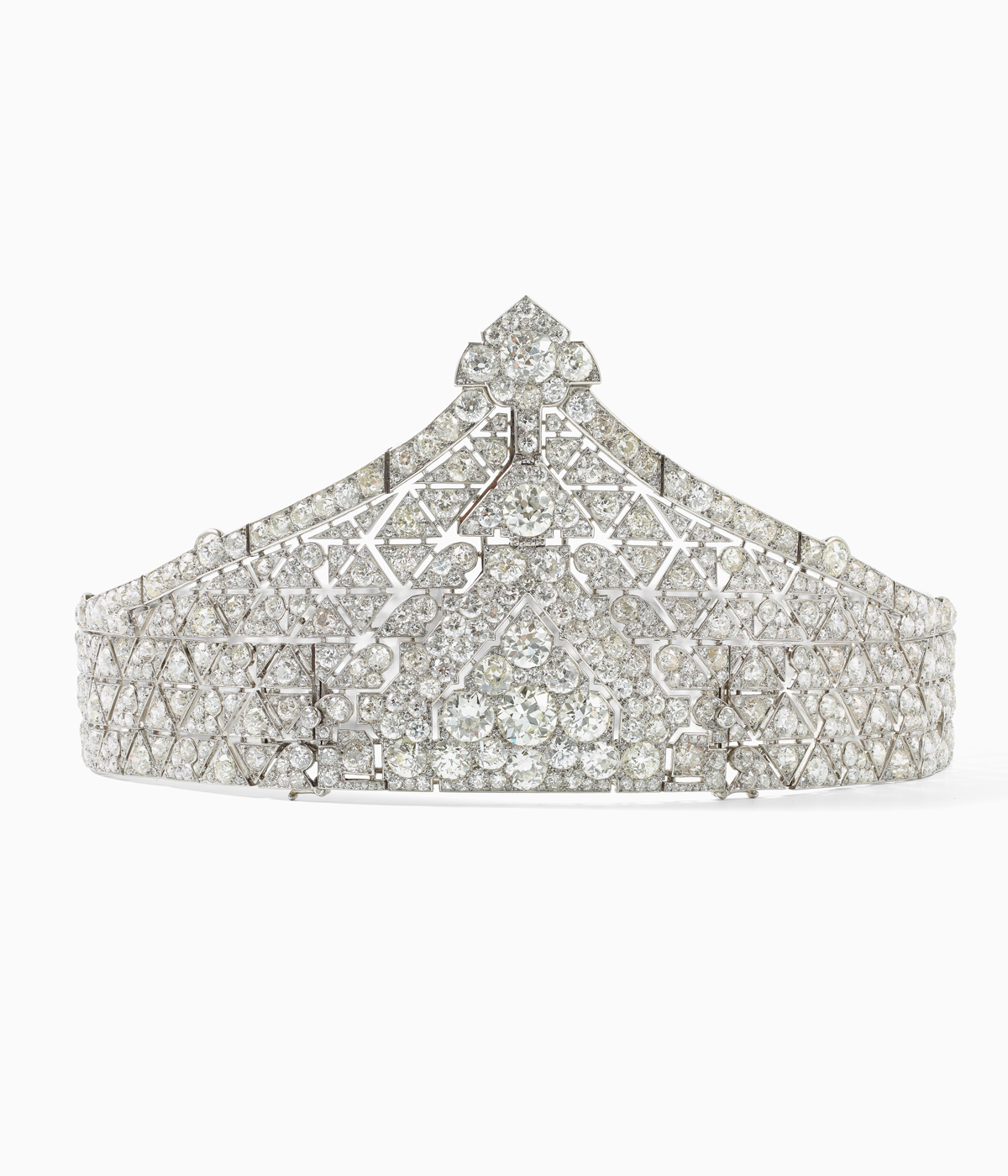
Tiara from the archives
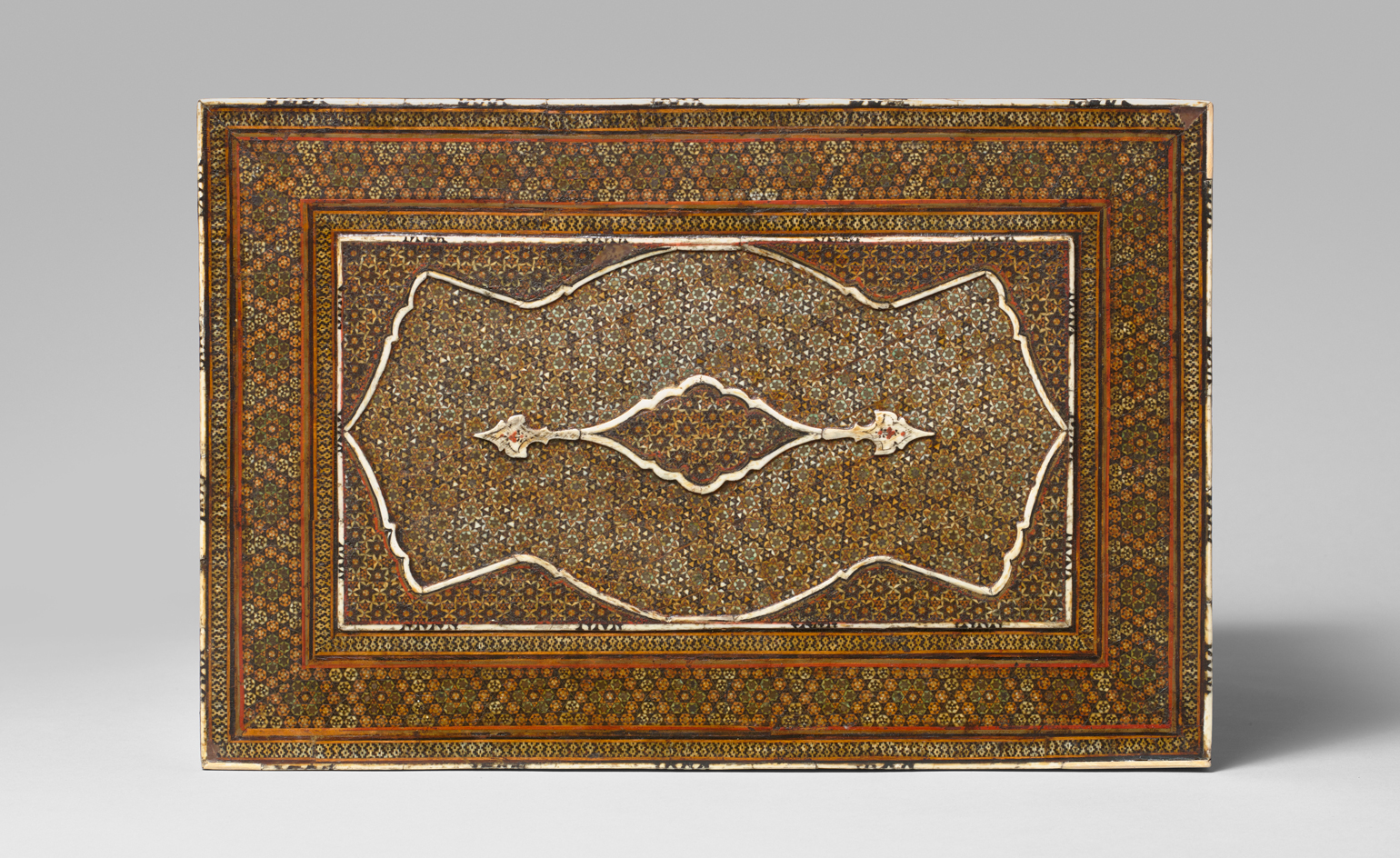
Decorated box from the archives
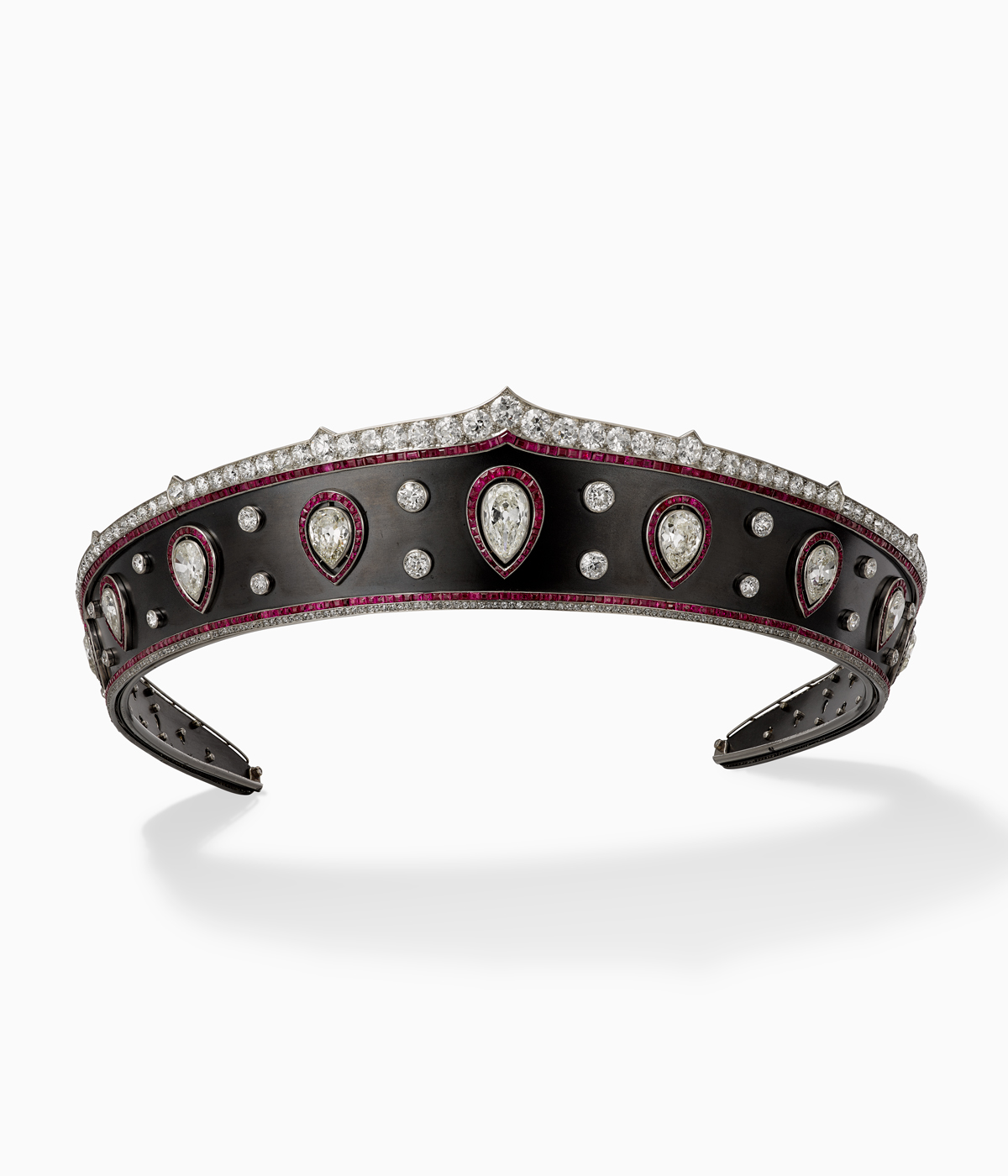
Black tiara from the archives
INFORMATION
‘Cartier and Islamic Art: In Search of Modernity’ runs 21 October 2021 – 20 February 20 2022, at the Musée des Arts Décoratifs in Paris, and is co-organised by the Musée des Arts Décoratifs, Paris, and the Dallas Museum of Art, with the exceptional collaboration of the Musée du Louvre and the support of Cartier.
Hannah Silver is the Art, Culture, Watches & Jewellery Editor of Wallpaper*. Since joining in 2019, she has overseen offbeat art trends and conducted in-depth profiles, as well as writing and commissioning extensively across the worlds of culture and luxury. She enjoys travelling, visiting artists' studios and viewing exhibitions around the world, and has interviewed artists and designers including Maggi Hambling, William Kentridge, Jonathan Anderson, Chantal Joffe, Lubaina Himid, Tilda Swinton and Mickalene Thomas.
-
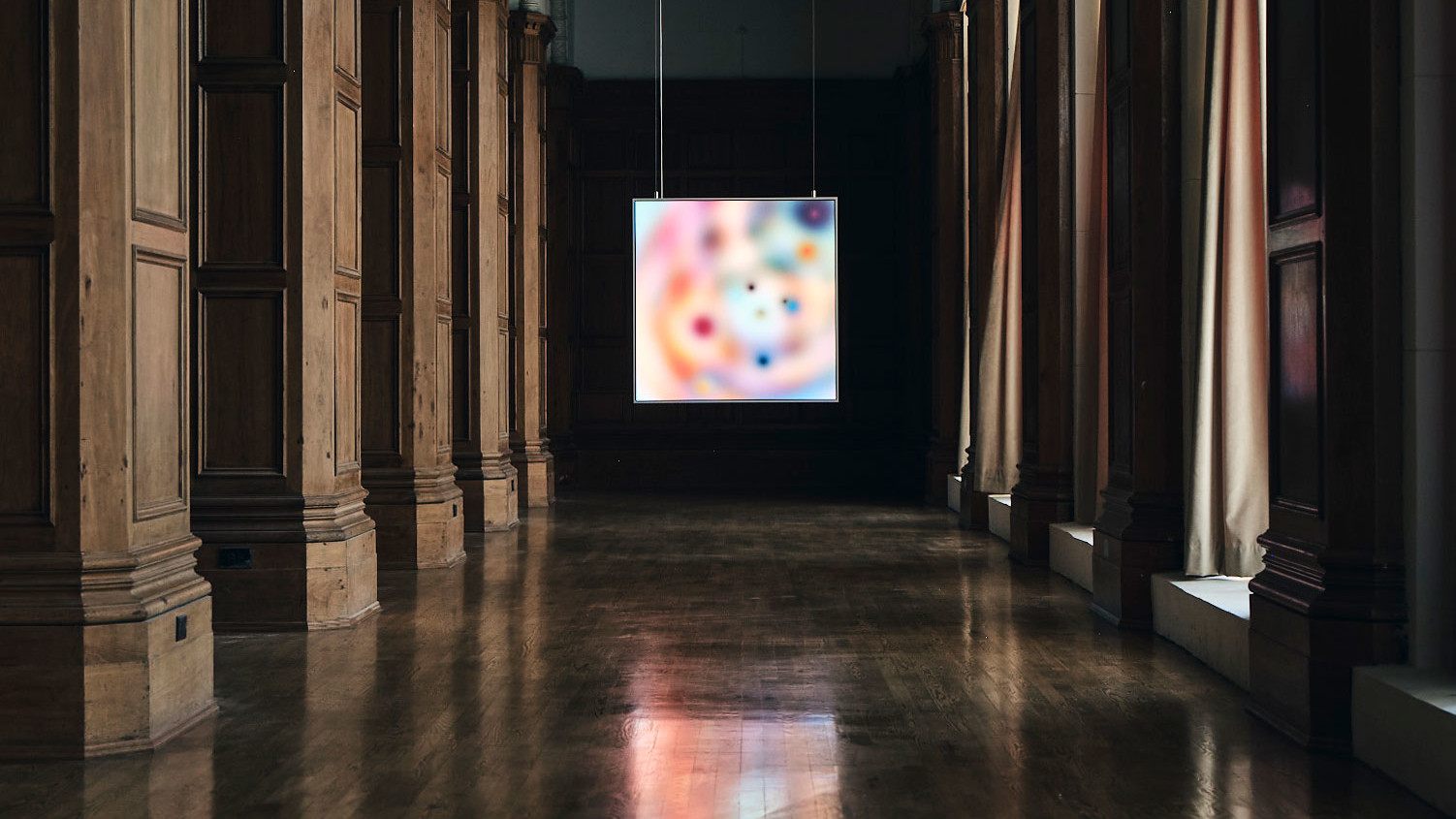 In the frame: Layer is a new high-tech platform for displaying unique pieces of generative art
In the frame: Layer is a new high-tech platform for displaying unique pieces of generative artA museum-grade canvas renders digital art with spectacular precision, cutting-edge tech and exacting industrial design
-
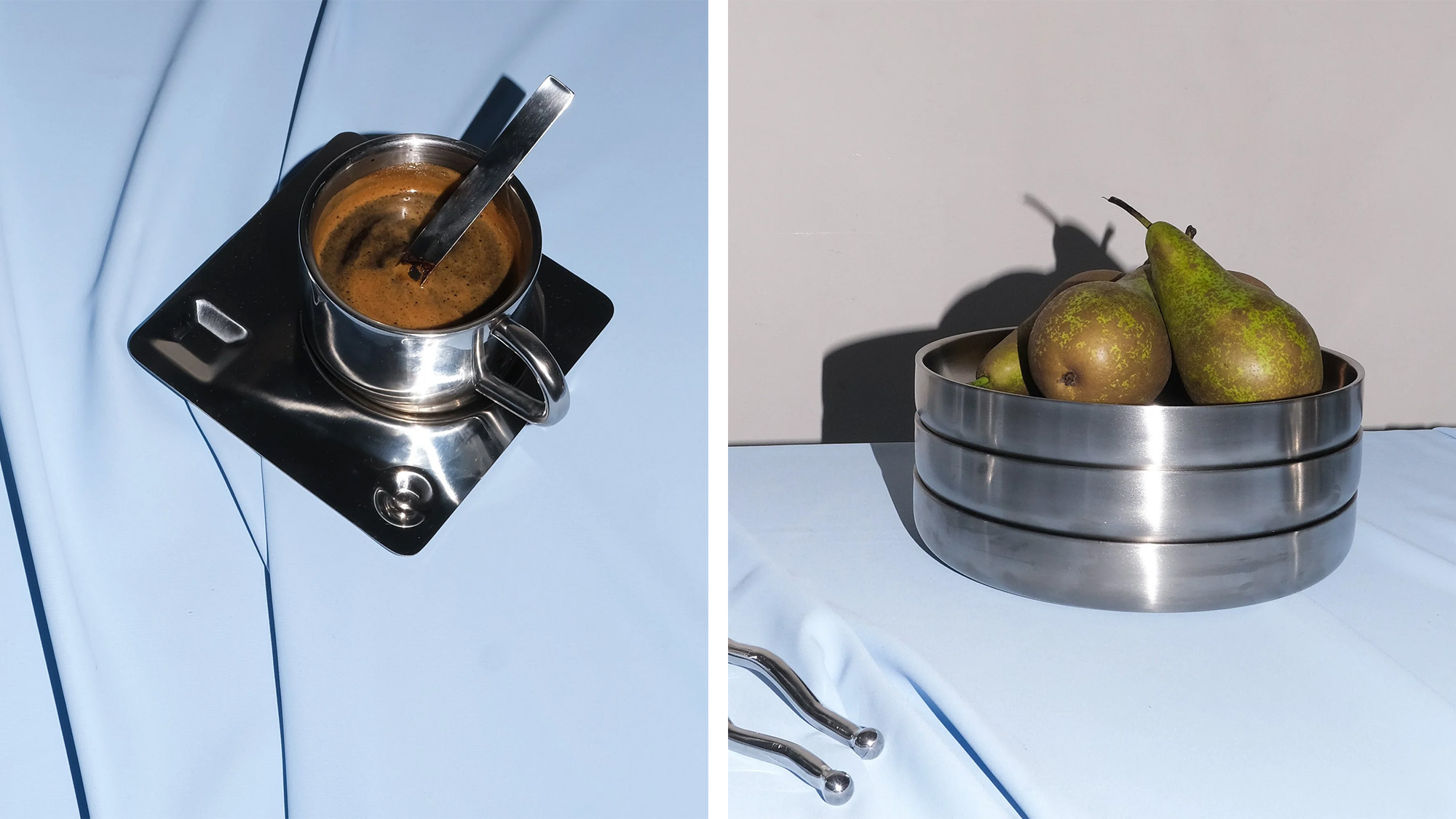 Chrome tableware to make your dining setup shine
Chrome tableware to make your dining setup shineOnce a hallmark of industrial and midcentury design, chrome is shining once again. The latest expression? Metallic dinner-, drink- and serveware that embody sophistication
-
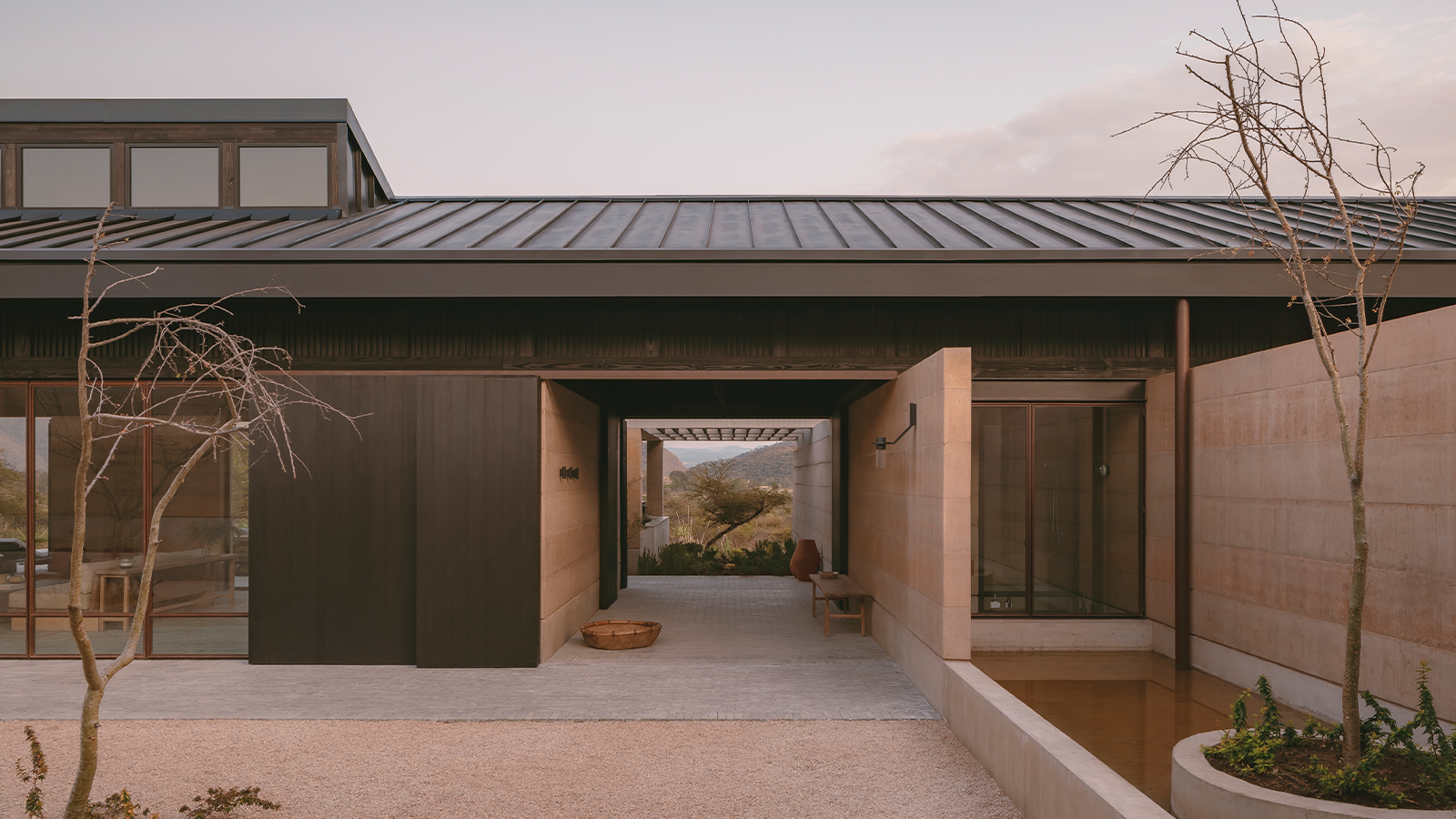 Serenity radiates through this Mexican home, set between two ravines
Serenity radiates through this Mexican home, set between two ravinesOn the cusp of a lakeside town, Mexican home Casa el Espino is a single-storey residence by Soler Orozco Arquitectos (SOA)
-
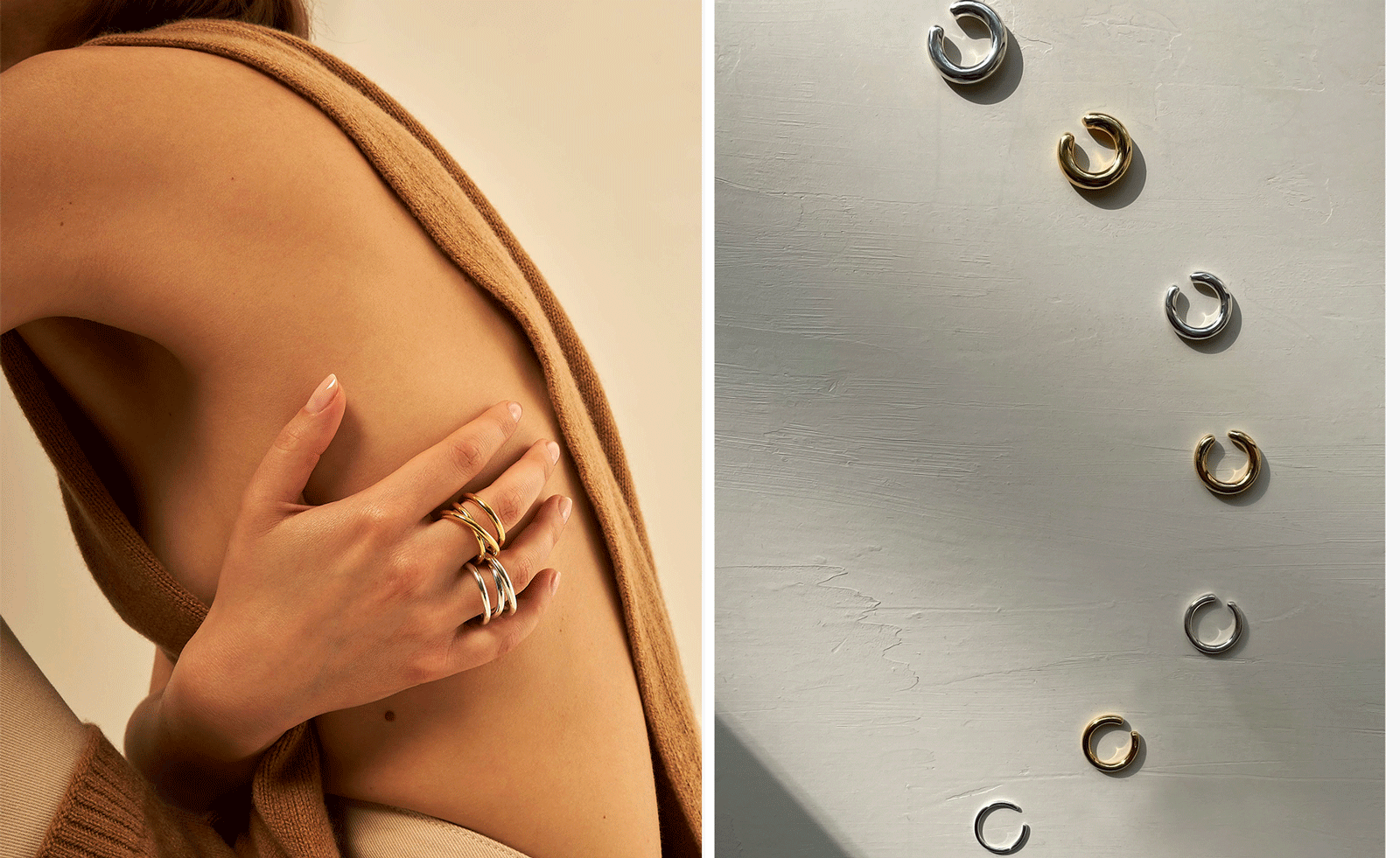 ALT Paris is a chic and fast-growing jewellery brand to know
ALT Paris is a chic and fast-growing jewellery brand to knowThe young company, which has just opened its second Paris boutique, has mastered the art of luxurious minimalism
-
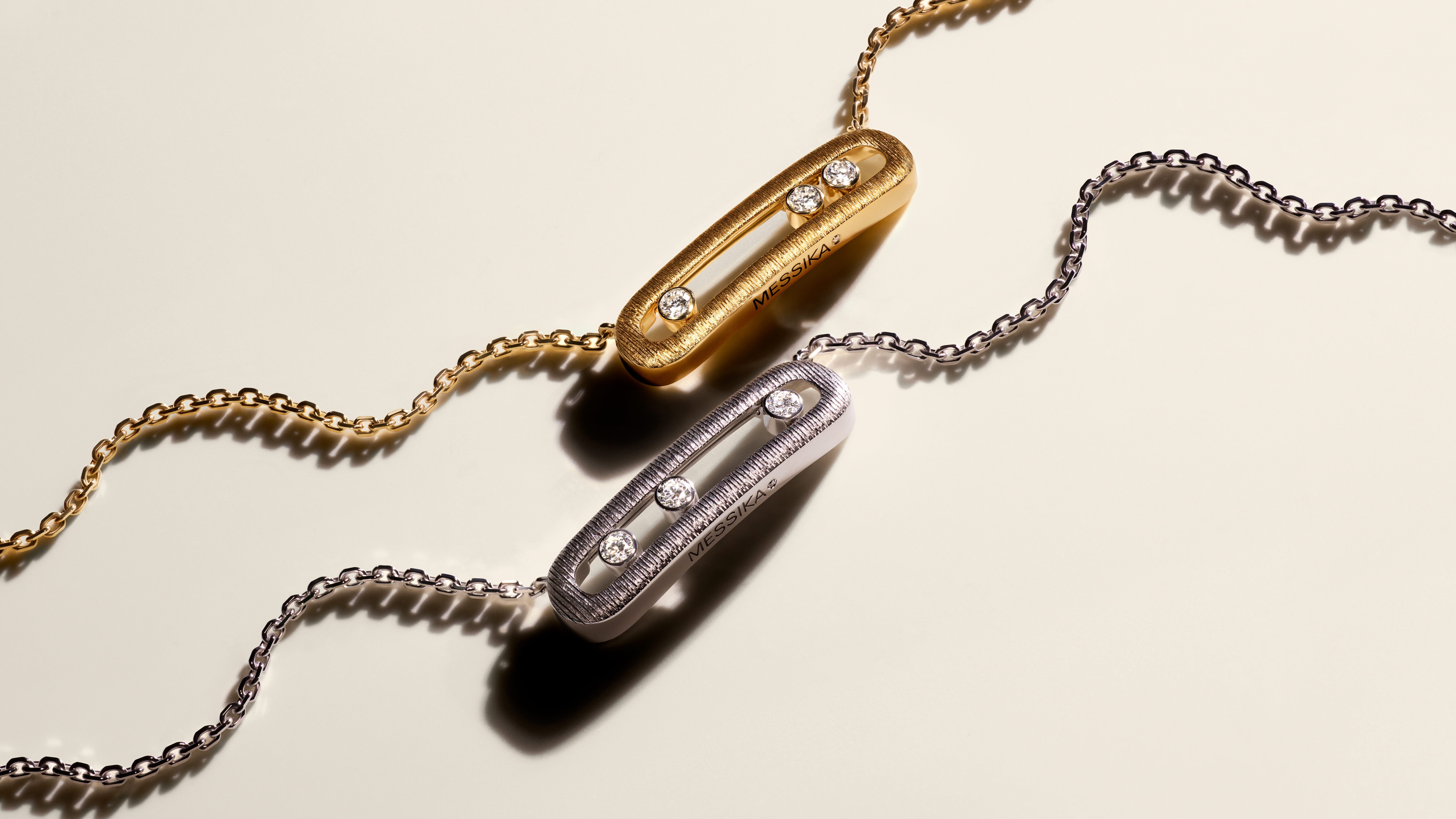 Messika’s fluid jewellery is given a textural twist
Messika’s fluid jewellery is given a textural twistThe Parisian brand borrows a textural finish previously reserved for high jewellery with its new collection, ‘Move Ciselé’
-
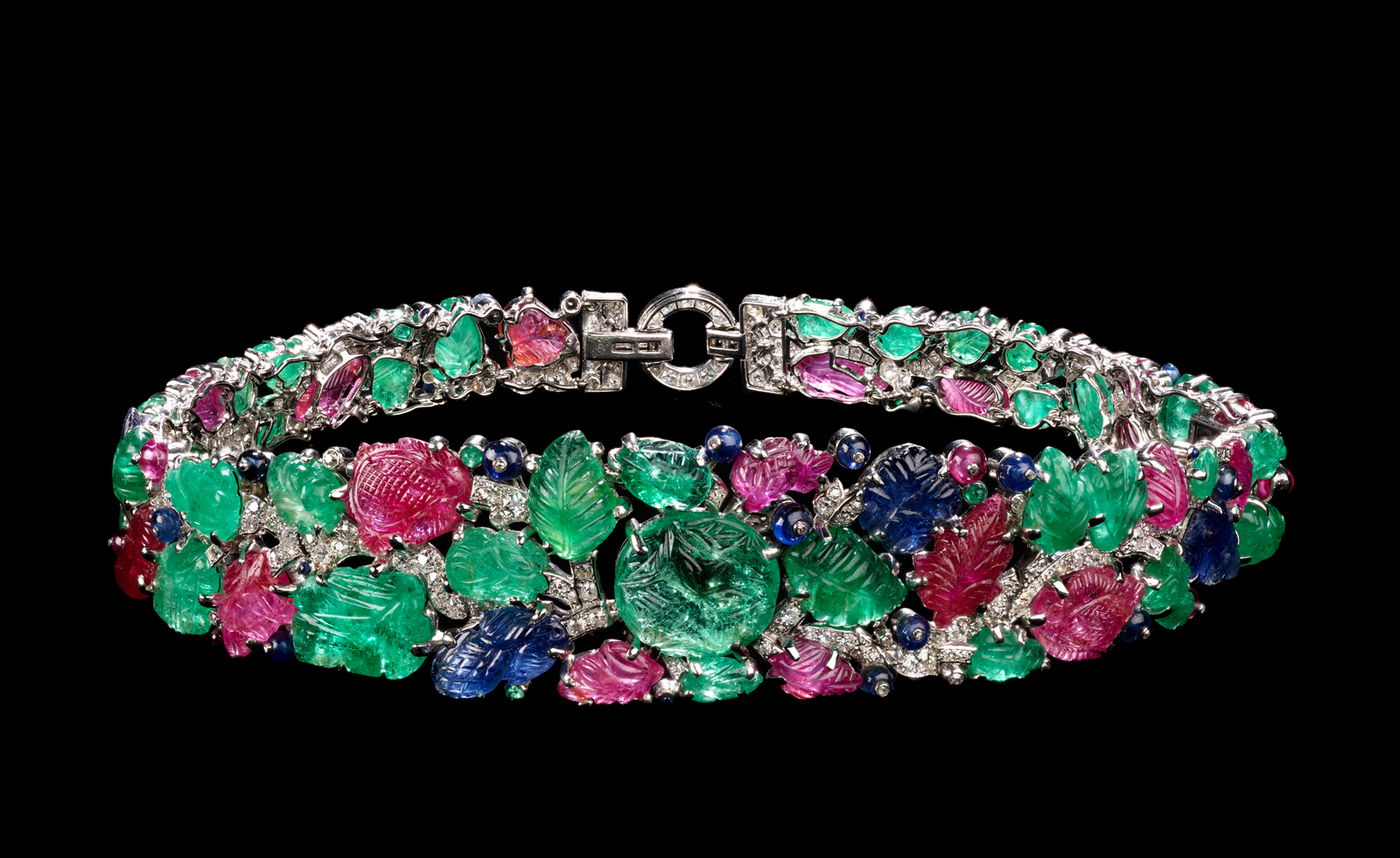 Cartier’s major new exhibition opens at the V&A and it’s a gem
Cartier’s major new exhibition opens at the V&A and it’s a gem‘Cartier’ at the V&A in London takes an epic tour through the house’s history and archives
-
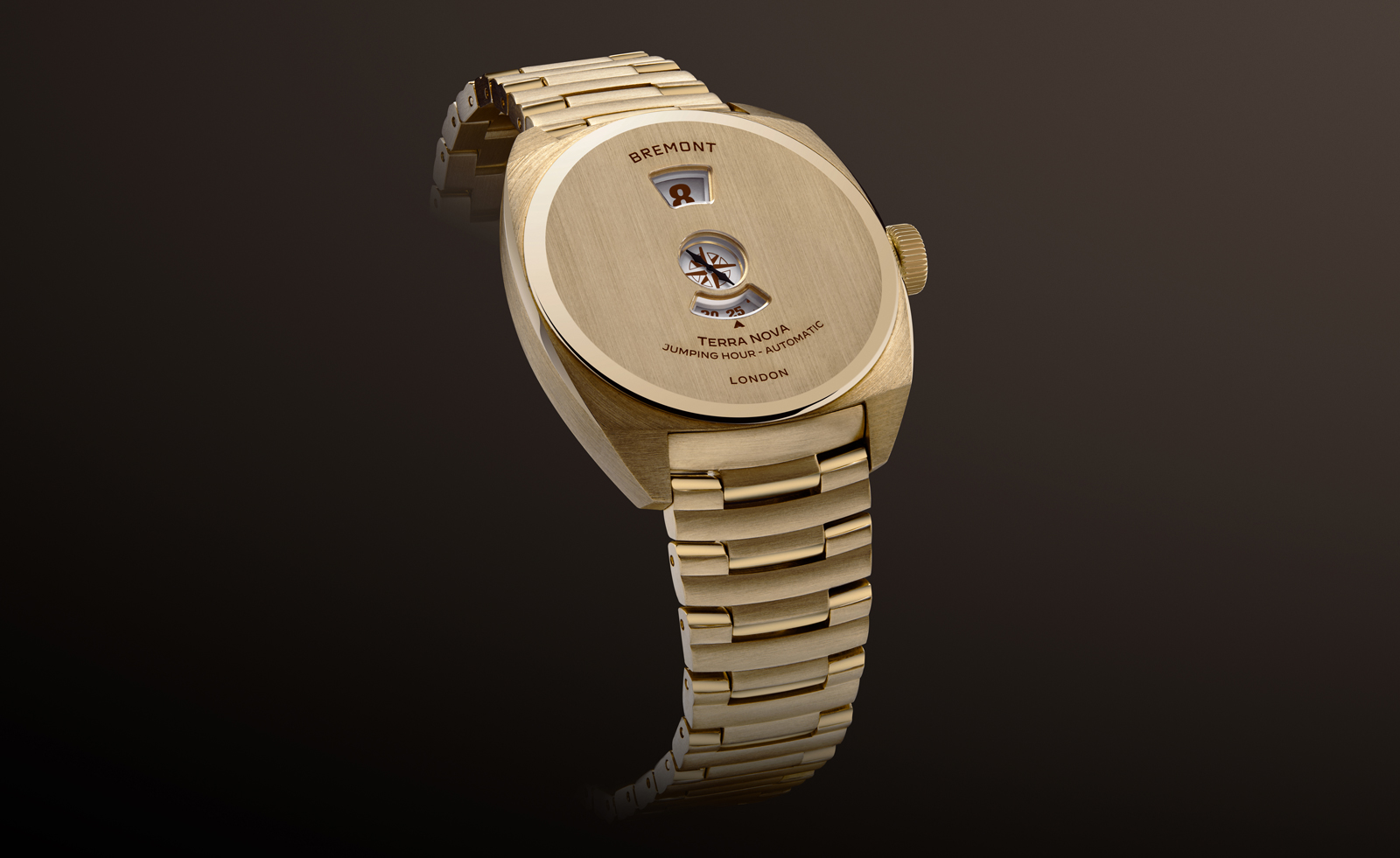 Are ‘jump hour’ watches the most enjoyable trend to come out of Watches and Wonders?
Are ‘jump hour’ watches the most enjoyable trend to come out of Watches and Wonders?Watches and Wonders 2025 saw new jump hour watches from Bremont, Cartier, Gerald Charles, Hautlence, Svend Andersen and others
-
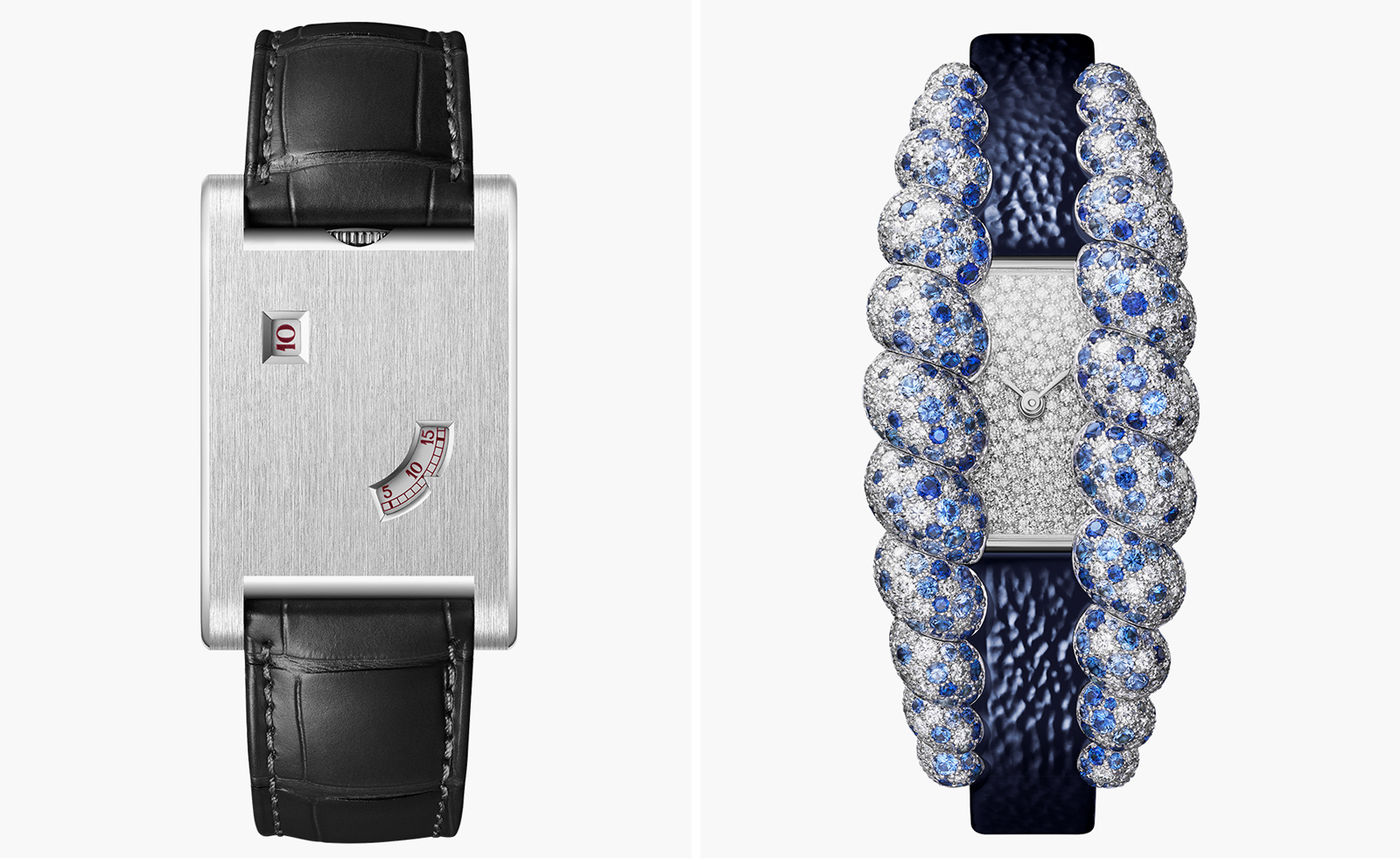 Cartier dials up the glamour at Watches and Wonders 2025
Cartier dials up the glamour at Watches and Wonders 2025Cartier revamps much-loved watch collections, from Privé and Panthère to Tank and Tressage, upping the sparkle at the watch fair in Geneva
-
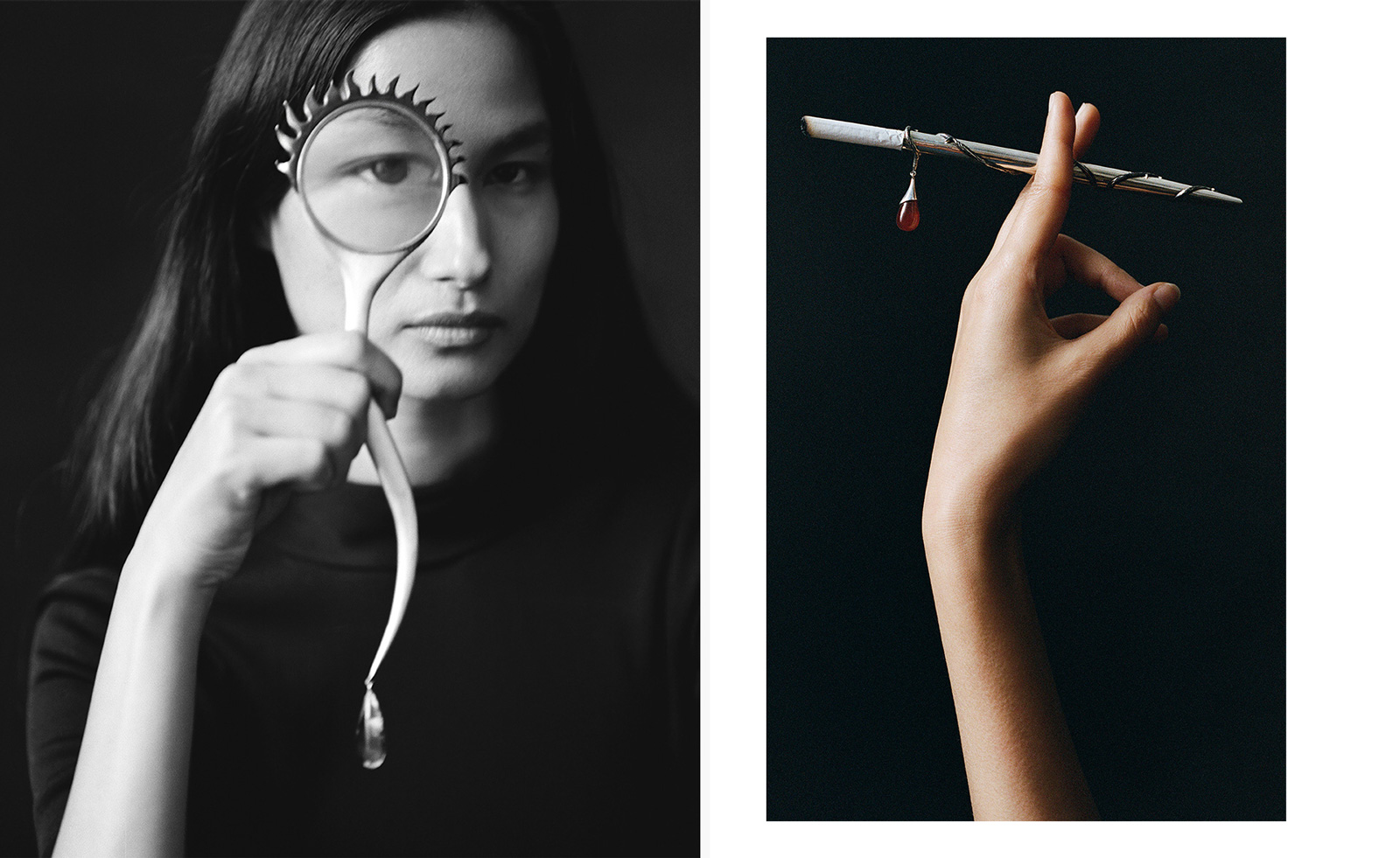 Sophie Buhai unveils dreamy design-led jewellery pieces for a Parisian gallery
Sophie Buhai unveils dreamy design-led jewellery pieces for a Parisian gallerySophie Buhai has created delightfully 'naughty' pieces for her custom collection for Galerie Anne-Sophie Duval
-
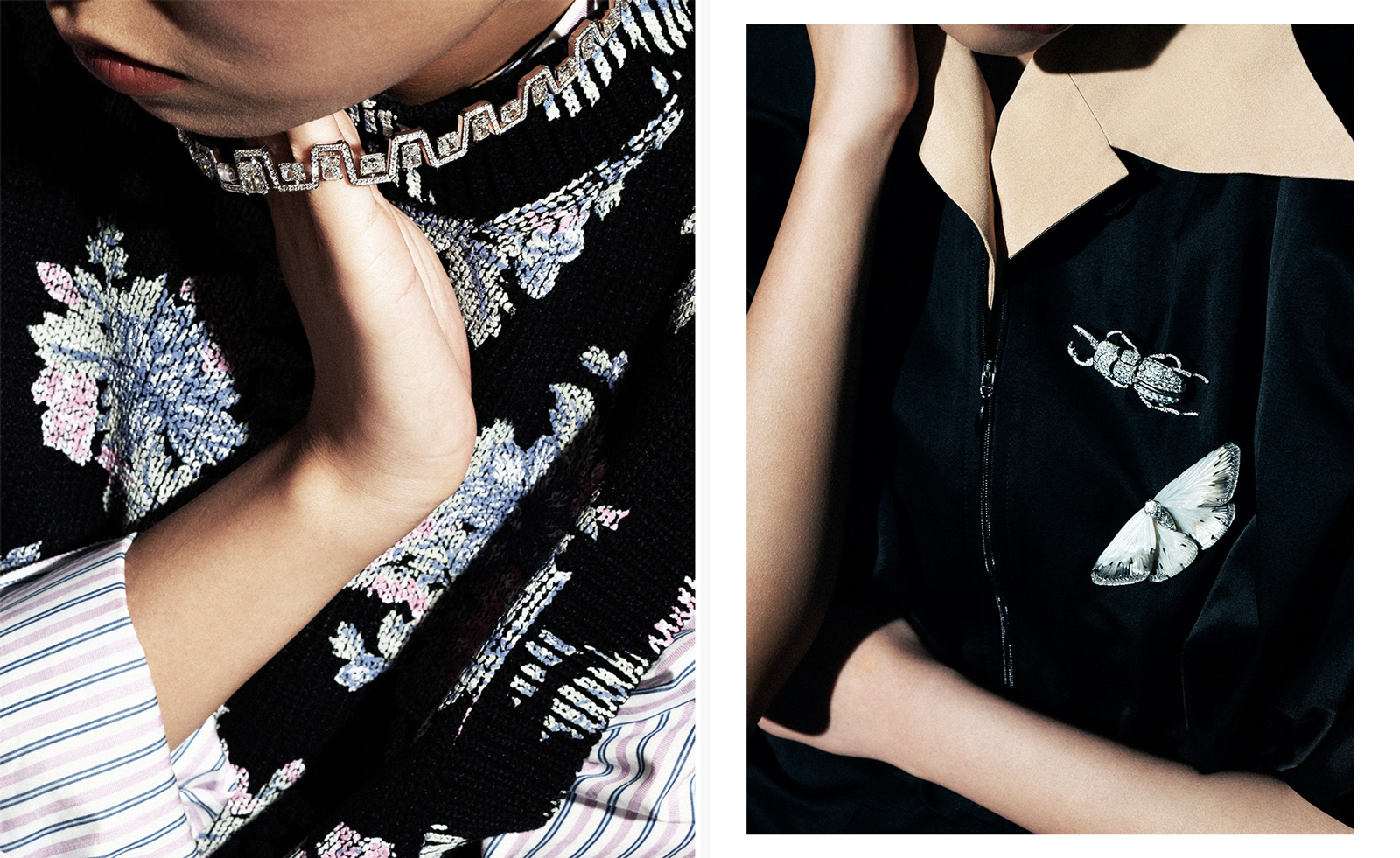 Dazzling high jewellery for statement dressers
Dazzling high jewellery for statement dressersIntricate techniques, bold precious stones and designs unite in these exquisite high jewellery pieces
-
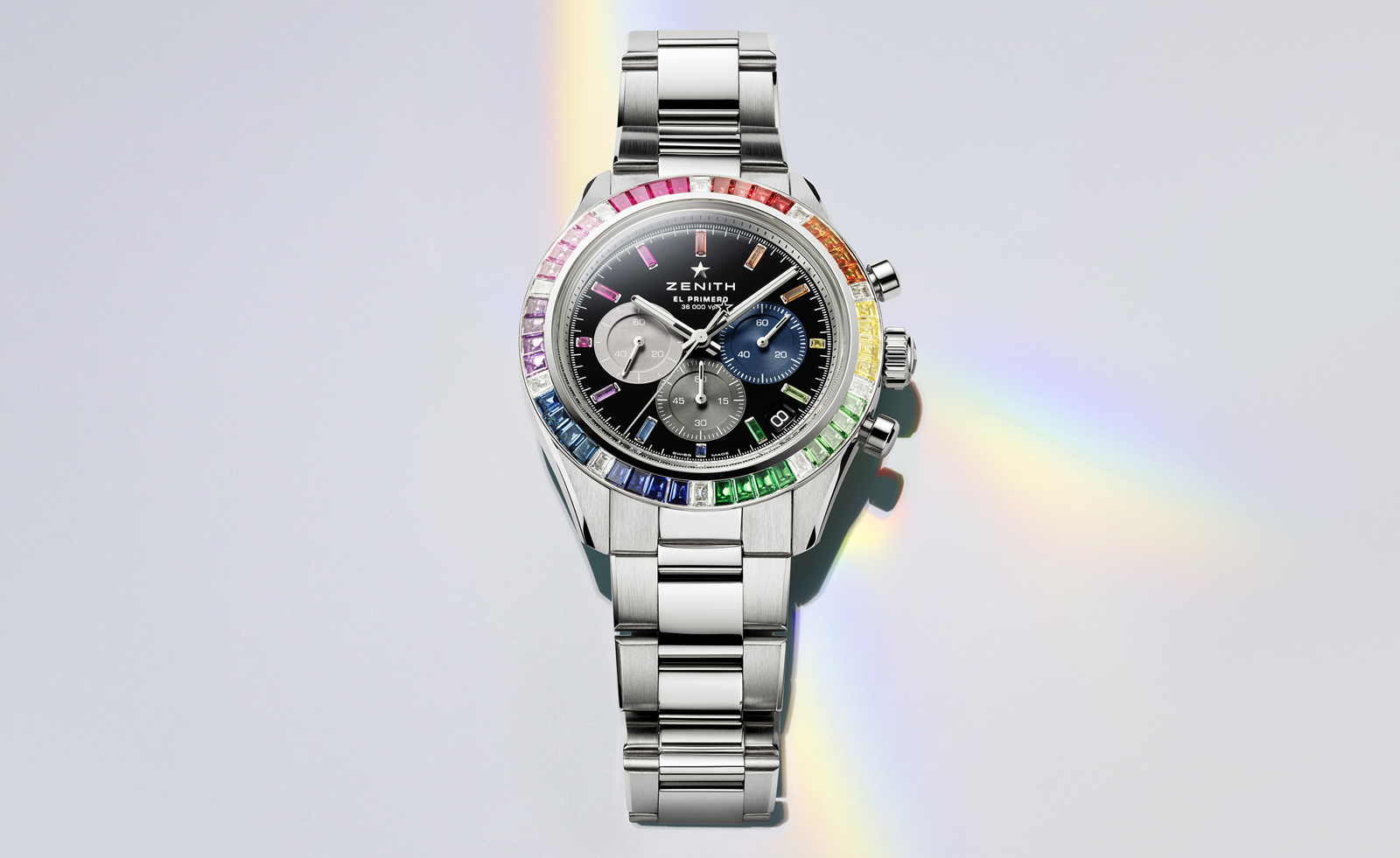 LVMH watch week 2025: everything we know so far
LVMH watch week 2025: everything we know so farOur guide to LVMH Watch Week 2025, taking place in New York and Paris, starting 21 January; keep an eye out for our updates